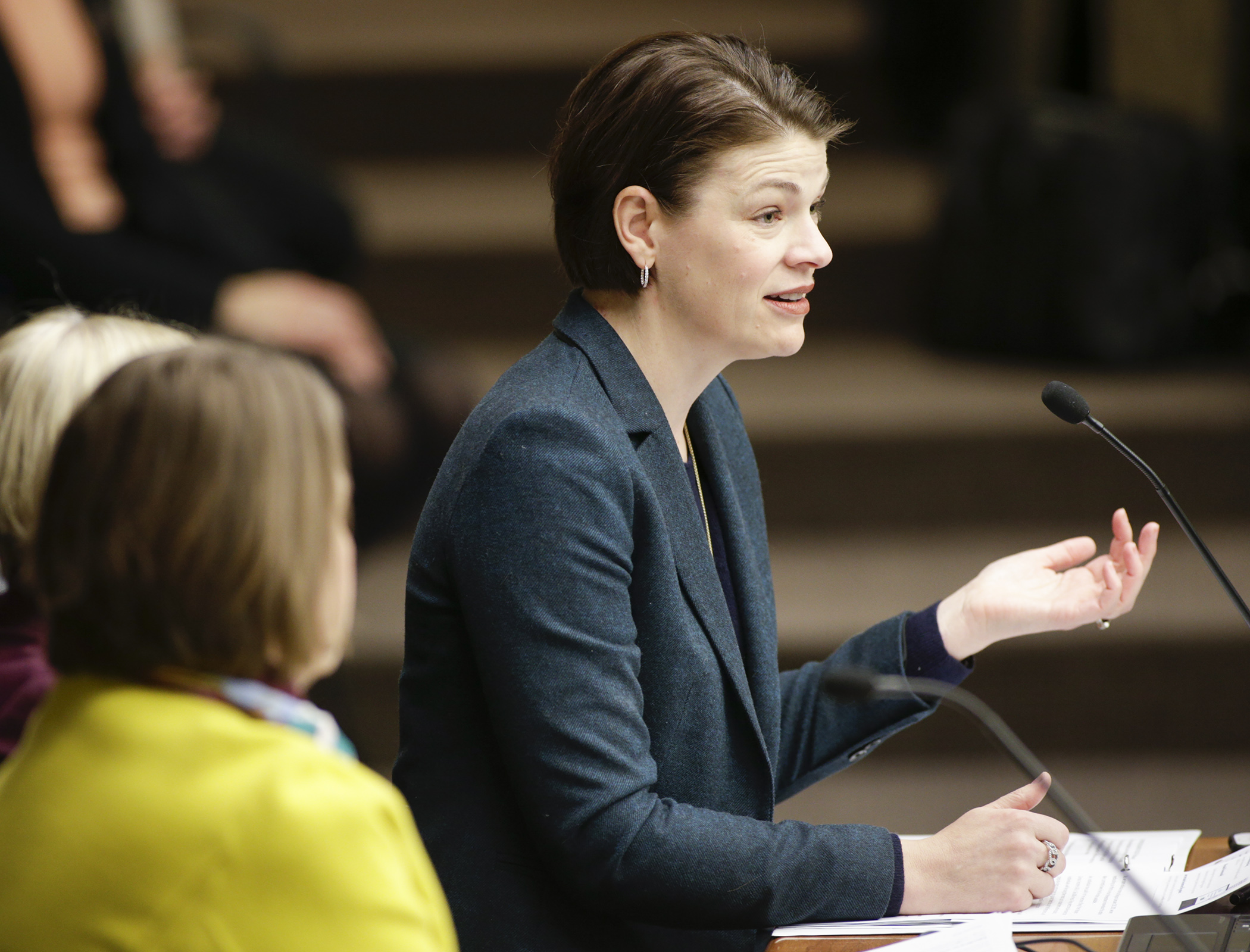Revenue department lays out changes as calendar turns to tax season
Opening day of the tax season may not be approached with the anticipation of, say, the fishing or baseball opener, but it is at the Department of Revenue.
Tax season starts Monday, and Revenue Commissioner Cynthia Bauerly and two assistant commissioners told the House Taxes Committee Thursday what tax filers can expect to be different this year.
For individual income tax filers, there are a few key changes inspired by the federal Tax Cuts and Jobs Act signed into law in late 2017.
It all starts on Line 1 of the basic Minnesota income tax form, the Form M1. Federal adjusted gross income is the new starting point, although the tax rate is still derived from federal taxable income. The change is for simplicity’s sake, as adjusted gross income is now the figure used on federal tax forms, which filers will complete prior to moving on to state forms.
 Revenue Commissioner Cynthia Bauerly gives the House Taxes Committee an update on the 2019 tax filing season during a Jan. 24 hearing. Photo by Paul Battaglia
Revenue Commissioner Cynthia Bauerly gives the House Taxes Committee an update on the 2019 tax filing season during a Jan. 24 hearing. Photo by Paul BattagliaTaxpayers will also be able to choose whether to take the standard deduction or itemize deductions at the state level, regardless of which option they chose on the federal return (unless married and filing separately, in which case it will be necessary to itemize if a spouse does).
Personal exemptions are still used to file in Minnesota, even though they’ve disappeared from the federal return. Taxpayers can subtract $4,150 per exemption. The amount of a standard deduction has also changed: It’s now $6,500 — or $13,000 for those married and filing jointly — with $1,300 to $1,600 additions for those blind and/or over 65. The “head of household” rate is now $9,550, while the “dependent on another return” formula has changed.
There are also five new schedules. They are related to: itemized deductions, unreimbursed employee business expenses, moving expenses, casualty and theft, and like kind exchanges of personal property.
For businesses, things get considerably more complicated. There are seven new schedules related to new provisions in federal tax law, and the department has tried to simplify things with a list of those provisions and the schedules needed for filing. They can be found at www.revenue.state.mn.us.
That site is also handy for vendors trying to determine what sales tax to charge customers, which can vary from county to county. It’s also the place filers can check to find out if they are eligible for free electronic income tax filing, which is available to those with adjusted gross income of $66,000 or less. Last year, 800,000 Minnesotans eligible for the program didn’t use it.
And, finally, the good news: Bauerly said 1.7 million of the 2.9 million Minnesotans filing this year are expected to receive a refund.
Related Articles
Search Session Daily
Advanced Search OptionsPriority Dailies
Ways and Means Committee OKs proposed $512 million supplemental budget on party-line vote
By Mike Cook Meeting more needs or fiscal irresponsibility is one way to sum up the differences among the two parties on a supplemental spending package a year after a $72 billion state budg...
Meeting more needs or fiscal irresponsibility is one way to sum up the differences among the two parties on a supplemental spending package a year after a $72 billion state budg...
Minnesota’s projected budget surplus balloons to $3.7 billion, but fiscal pressure still looms
By Rob Hubbard Just as Minnesota has experienced a warmer winter than usual, so has the state’s budget outlook warmed over the past few months.
On Thursday, Minnesota Management and Budget...
Just as Minnesota has experienced a warmer winter than usual, so has the state’s budget outlook warmed over the past few months.
On Thursday, Minnesota Management and Budget...